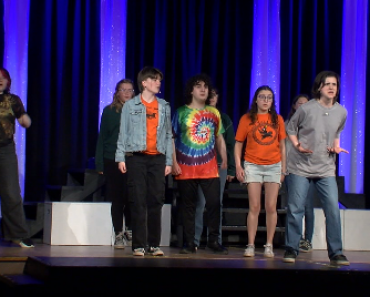Do you like old timey music?
Splendid.
You can’t get more old timey than Hurrian Hymn No. 6, which was discovered on a clay tablet in the ancient Syrian port city of Ugarit in the 1950s, and is over 3400 years old.
Actually, you can — a similar tablet, which references a hymn glorifying Lipit-Ishtar, the 5th king of the First Dynasty of Isin (in what is now Iraq), is older by some 600 years. But as CMUSE reports, it “contains little more than tuning instructions for the lyre.”
Hurrian Hymn No. 6 offers meatier content, and unlike five other tablets discovered in the same location, is sufficiently well preserved to allow archaeologists, and others, to take a crack at reconstructing its song, though it was by no means easy.
University of California emeritus professor of Assyriology, Anne Kilmer spent 15 years researching the tablet, before transcribing it into modern musical notation in 1972.
Hers is one of several interpretations YouTuber Hochelaga samples in the above video.
While the original tablet gives specific details on how the musician should place their fingers on the lyre, other elements, like tuning or how long notes should be held, are absent, giving modern arrangers some room for creativity.
Below archaeomusicologist Richard Dumbrill explains his interpretation from 1998, in which vocalist Lara Jokhader assumes the part of a young woman privately appealing to the goddess Nikkal to make her fertile:
Here’s a particularly lovely classical guitar spin, courtesy of Syrian musicologist Raoul Vitale and composer Feras Rada…
And a haunting piano version, by Syrian-American composer Malek Jandali, founder of Pianos for Peace:
And who can resist a chance to hear Hurrian Hymn No. 6 on a replica of an ancient lyre by “new ancestral” composer Michael Levy, who considers it his musical mission to “open a portal to a time that has been all but forgotten:”
I dream to rekindle the very spirit of our ancient ancestors. To capture, for just a few moments, a time when people imagined the fabric of the universe was woven from harmonies and notes. To luxuriate in a gentler time when the fragility of life was truly appreciated and its every action was performed in the almighty sense of awe felt for the ancient gods.
Samurai Guitarist Steve Onotera channels the mystery of antiquity too, by combining Dr. Dumbrill’s melody with Dr. Kilmer’s, trying and discarding a number of approaches — synthwave, lo-fi hip hop, reggae dub (“an absolute disaster”) — before deciding it was best rendered as a solo for his Fender electric.
Amaranth Publishing has several MIDI files of Hurrian Hymn No. 6, including Dr. Kilmer’s, that you can download for free here.
Open them in the music notation software program of your choice, and should it please the goddess, perhaps yours will be the next interpretation of Hurrian Hymn No. 6 to be featured here on Open Culture…
Note: An earlier version of this post appeared on our site in 2022.
Related Content
What Ancient Greek Music Sounded Like: Hear a Reconstruction That is ‘100% Accurate’
The Evolution of Music: 40,000 Years of Music History Covered in 8 Minutes
A Modern Drummer Plays a Rock Gong, a Percussion Instrument from Prehistoric Times
– Ayun Halliday is the Chief Primatologist of the East Village Inky zine and author, most recently, of Creative, Not Famous: The Small Potato Manifesto. Follow her @AyunHalliday.







